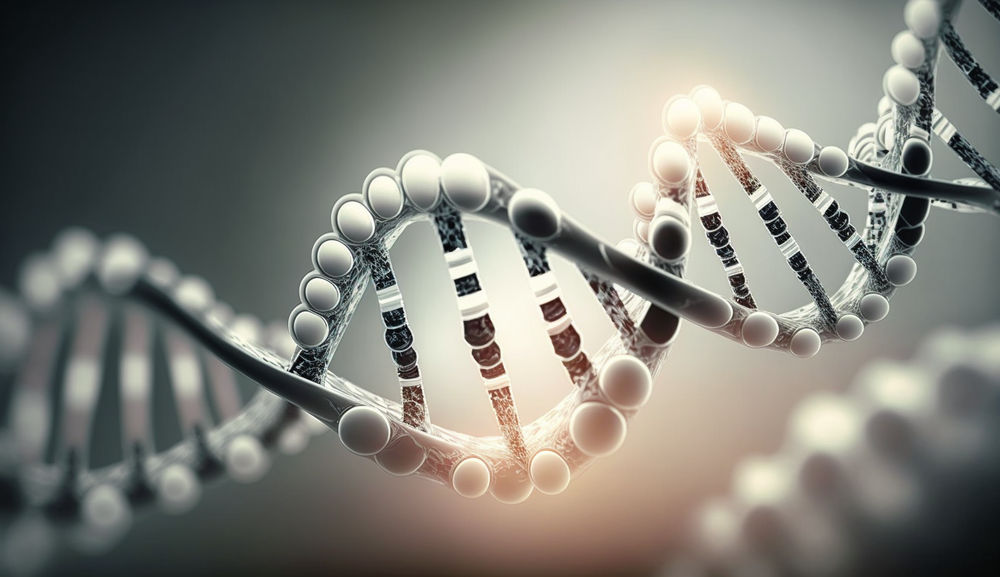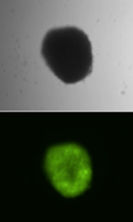Molecular Invasion - Sleeping Beauty Affects Cell Cycle of Host Cell
Advertisement
Can mobile genetic elements or transposons be used as genetic tools for gene discovery or for gene therapy? And how do they affect their host cell? These are questions which Dr. Zoltán Ivics and Dr. Zsuzsanna Izsvák from the Max Delbrück Center for Molecular medicine (MDC) Berlin-Buch in Germany have been pursuing for the last few years. The scientists constructed an artificial transposon which they named Sleeping Beauty. The transposon is based on an ancient genomic element from fish, which was presumably active 20 million years ago and, in the laboratory, has been awakened after a long evolutionary sleep. Now, the researchers report on how Sleeping Beauty interacts with a host cell. They found that it affects the cell cycle, a process which a cell undergoes during replication. They were able to show that Sleeping Beauty slows down the growth of the cell by interacting with a gene regulator (Miz-1) and, thus, modulating the G1 phase of the cell cycle, usually a period of general cell growth. The researchers assume that Sleeping Beauty acts very selfishly. During G1-phase it maximizes its chance of more successfully invading the host cell. Also, it is a phase of the cell cycle where transposon-induced DNA-damage can be efficiently repaired by the host cell. Subsequent experiments will concentrate on a detailed survey of transpositional efficiency during each phase of the cell cycle and will be designed to uncover the relative contribution of different DNA repair pathways to the transposition process. Mobile genetic elements were discovered in corn by the American researcher Barbara McClintock in the late forties of the last century. In 1983, she received the Nobel Prize for her discovery. Dr. McClintock revealed for the first time that the genome is not a stable entity but rather "mobile" due to the activities of transposable elements termed transposons. Transposons can be found in the genomes of all living organisms, ranging from bacteria to humans, where they make up a surprisingly large fraction of DNA (45 per cent). These elements can be considered molecular parasites, living and evolving together with their host. Transposons can induce DNA damages in their host, but most transposons in vertebrates are inactive remains of once active elements. Some of the basic cellular mechanisms originate from transposons which makes them very interesting for scientists today, who hope to exploit them as useful genetic tools as, for example, in gene therapy techniques. Original publication: O. Walisko, Z. Izsvák, K. Szabó, C. D. Kaufman, S. Herold, Z. Ivics; "Sleeping Beauty transposase modulates cell cycle progression through interaction with Miz-1"; Proceedings of the National Academy of Sciences (PNAS) 2006, Vol.103, No. 11, 4063-4067.
Other news from the department science
Most read news
More news from our other portals
See the theme worlds for related content
Topic world Gene therapy
Genetic diseases once considered untreatable are now at the center of innovative therapeutic approaches. Research and development of gene therapies in biotech and pharma aim to directly correct or replace defective or missing genes to combat disease at the molecular level. This revolutionary approach promises not only to treat symptoms, but to eliminate the cause of the disease itself.

Topic world Gene therapy
Genetic diseases once considered untreatable are now at the center of innovative therapeutic approaches. Research and development of gene therapies in biotech and pharma aim to directly correct or replace defective or missing genes to combat disease at the molecular level. This revolutionary approach promises not only to treat symptoms, but to eliminate the cause of the disease itself.
















































